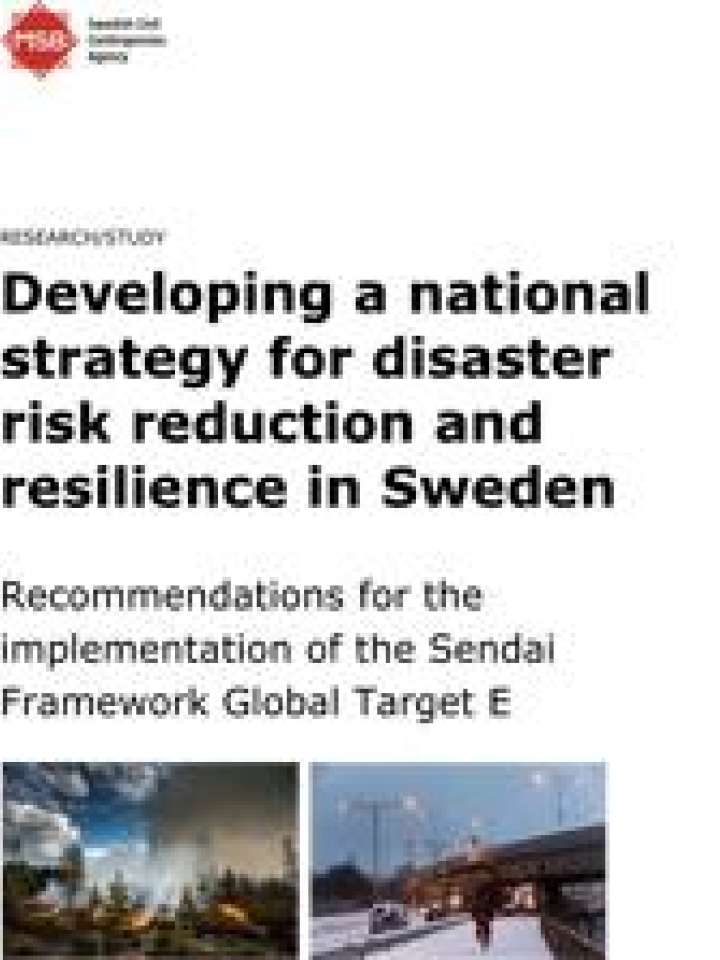Developing a national strategy for disaster risk reduction and resilience in Sweden
Increasing impacts from hazards worldwide, including Sweden, have prompted international efforts to promote the development of national strategies for disaster risk reduction (DRR) and resilience to reduce associated impacts and support sustainable development. The development of such strategies is global target E of the Sendai Framework for DRR 2015-2030, which was adopted in 2015 by Sweden and other UN member states.
The overall purpose of this study was to support MSB in the implementation of the global target E of the Sendai Framework for DRR. The specific aim was to provide knowledge and recommendations for decision-making. This includes the analysis of the relevance and scope of developing a national strategy for DRR and resilience. The study also identifies drivers and barriers for creating policy coherence and local-level support. In fact, it addresses what to consider in developing a national and local strategies and provides information about how to achieve coherence with current laws and strategies. Furthermore, the study addresses the challenges of meeting UNDRR’s ten criteria for DRRstrategies and four priority areas as well as the importance of selecting good indicators. Apart from the local context and conditions, it considers lessons learned from six other European countries.
The results show that there is a clear need, and vast support, for the development of a national strategy for DRR and resilience in Sweden in order to improve current approaches, address shortfalls, and build on the existing strengths. The inclusion of concrete measures and associated budgeting are needed for the strategy to become useful and effective for the Swedish society. It is also highlighted that the process for developing and implementing a national strategy is equally or even more important than the strategy itself. Specific recommendations for a national strategy are described in this report.
Explore further
